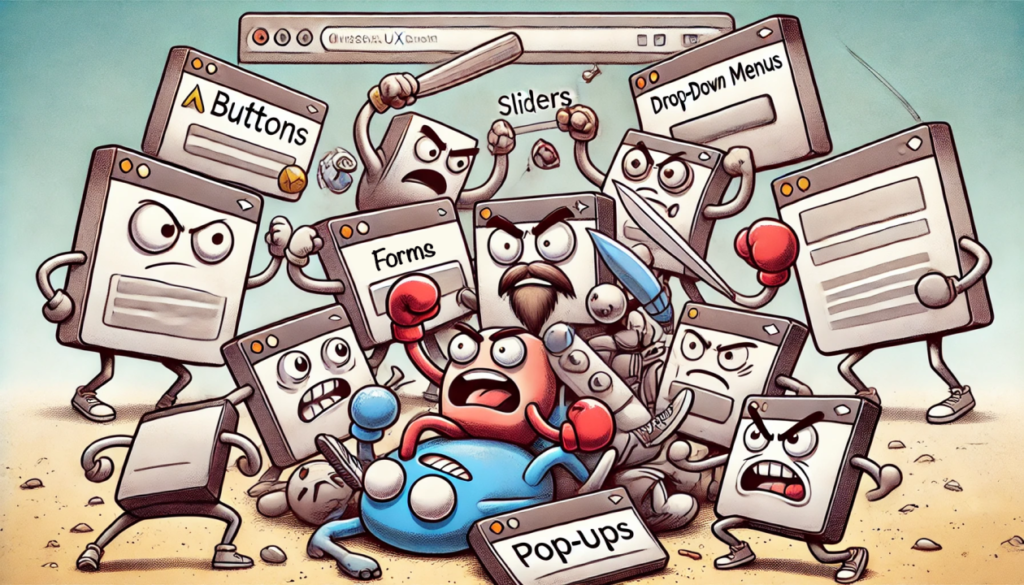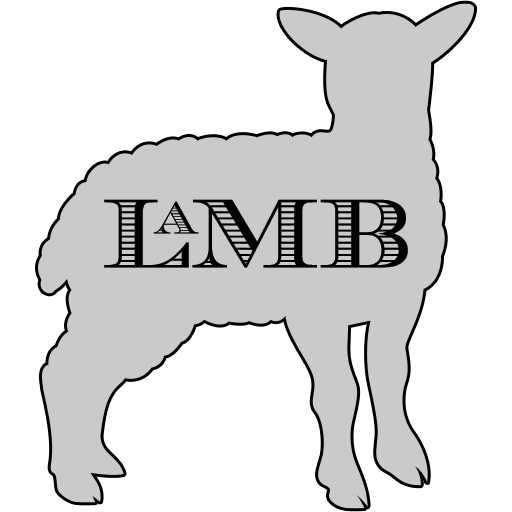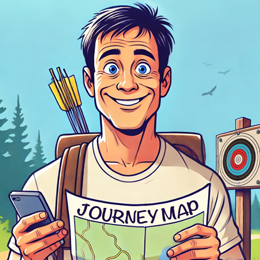
Page-level Widgets in Combat
The biggest misconception among clients and potential clients is that good UX is achieved at the widget level. Many believe that a finite object, such as the content or layout of a web page, a new digital tool, or an overhaul of visual branding, is the key to digital relevance. However, true and lasting digital evolution requires an ideation+delivery+support ecosystem that must be grown, cultivated, and maintained.
This misconception is often exacerbated by the need for sales leaders to sell a business vision broken down into legally definable services, software, and hardware. At the end of the sales cycle, the relationship invariably reaches a point where the client must decide which piece of this vision to tackle first.
What the Client Wants vs. What They Actually Need
Potential clients often come with a preliminary vision, whether formally detailed or sketched on the back of a napkin. They have plans for organizational and personal success, hoping to make their big ideas a reality. Careers can be made with the fruition of big ideas. Unfortunately, these vision roadmaps frequently lack the depth of understanding needed to create a verdant digital ecosystem.
Many consultancies offer “digital transformation” services aimed at helping clients analyze their assets, evaluate future tracks, and visualize roadmaps. However, clients are often hesitant to invest in these tracks because they produce a plan rather than an immediate digital deliverable. So, where does that leave us?
It is possible to drive digital transformation through the effective implementation of a robust digital project management ethos. Traditional project management focuses on the deliverable, but for both consultancies and enterprises, the project journey starts earlier and ends later. The project management scope must encompass these prologues and epilogues to leverage a single project as a model for a successful ecosystem.
Key components include:
- Success metrics and retrospectives
- Presales vision and relationship development
- Thorough and specific statement of work
- Assigning the right team with the right chemistry
- A well-communicated project governance model
- Clearly defined requirements management plan
- Tailored delivery method and release schedule
- Early and frequent change management
The Roadmap
While many consultancies have the right pieces, deeper organizational analysis can identify and address gaps in people and processes. These assessments should measure organizational readiness, technology assets, skills, capabilities, and user experience. Deliverables might include customer journey maps, vision documents, pilot project prototypes, and multi-discipline roadmaps.
Without this holistic view, we risk becoming like the clients we aim to help—chasing visions without substance and hoping for the best. As a UX professional, this leaves me in a Sisyphean task of designing the next widget without the support mechanisms to drive maximum benefit.

Holistic Roadmap Example



